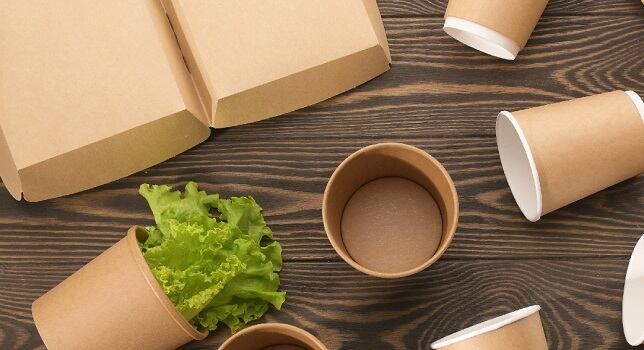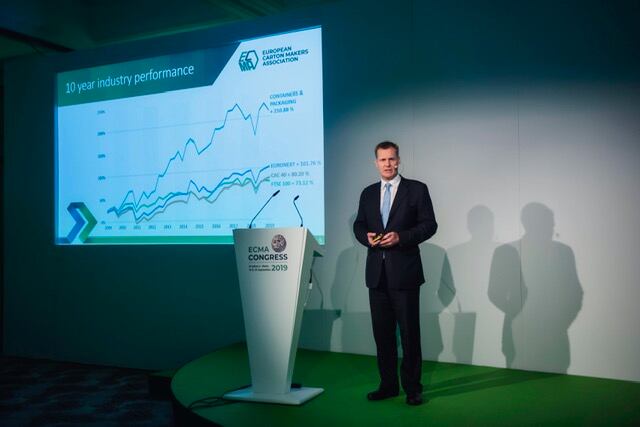Smithers latest market report ‘Sustainable Foodservice Packaging to 2024 – A State of the Art Report’ estimates the global foodservice market exceeds $31.4bn and it is growing at an annual rate of 5.3%.
Five year forecast
The report assesses the top 20 sustainable technologies in the foodservice packaging sector.
It examines each technology, commercialisation potential and current developments (with a focus on new materials technologies) and how these will evolve over the next five years.
“The global foodservice packaging industry provides a range of products and services to meet the requirements of brand owners and consumers. With sustainability increasingly high on the agenda of both there is a market imperative to introduce a new suite of materials,” said John Nelson, editor, Smithers Market Reports and Consulting.
“As green packaging becomes a core commitment from many quick-service restaurant, and take-home food brands material suppliers and converters who can deliver technologies that match performance of existing plastic formats can expect a price premium for these.”
To investigate the sector further Smithers conducted an investigation into the current sustainable foodservice designs derived from a pool of 650 foodservice industry experts and stakeholders.
Here, Nelson shares the material trends that will define the foodservice packaging segment as it responds to the challenge of a greener future.
Paperboard
The most immediate winners will be paperboard formats – in particular high-performance corrugated packaging constructed from lighter, stronger containerboards based on corrugating medium and coated or laminated linerboards for high-quality printing.
Accelerated growth over the next five years will come from greater use of e-commerce ready-to-go food delivery, including innovative designs for maintaining thermal insulation in such shipments.
Plastics
Besides losing market share to a new generation of paperboard packs, another trend within polymer formats will be a wider use of biopolymers. In the short term bio-based solutions of existing polymers, like PET, have an advantage in that they can directly substitute without recalibrating existing moulding lines.
New polymer type – only available with bio-based feedstocks, such as PLA – will see an additional benefit once their production reaches full commercial production. This includes their biodegradable and compostable nature that is especially desirable in foodservice.
Barrier coatings
Another key driver is the need for more recyclable functional barrier coatings for paperboard. Many current solutions impinge on the recyclability at end-of-life. The main demand is for water-based coating technologies to replace existing solvent-based technologies. The need to resist grease from fatty foods, and moisture from both hot and cold drinks, makes foodservice a particularly challenging application for technology developers.
Innovative materials
Over the next five years increased private and public-sector R&D funding will advance a range of alternative materials sets. These include: moulded fibre packs, nanocellulose, wood-based composites, and lignin-derived barrier coatings and plastics.
Advanced recovery
Advanced waste management and recycling technologies will also play a major role, which will potentially affect all foodservice segments, if implemented.
More effective waste separation that allow for a broader collection of foodservice packs will enhance the popularity of easily recycled materials – such as papers. Chemical recycling platforms that enable direct conversion of waste plastic to monomers and pre-polymer feedstocks are now undergoing trials. Once they reach commercial implementation these could seriously cut the negative environmental impact of plastic food containers.
Smithers 20 technologies for foodservice packaging 2019-2024
· Advanced waste management and recycling
· Aqueous barrier coatings
· Aromatic polyesters
· Bio-based polyamides (PA)
· Bio-based polyolefins
· Edible packaging
· High-bulk substrates
· High-performance corrugated packaging
· High-performance packaging made from paper or paperboard
· Lignin-based barrier coatings and plastics
· Moulded fibre packaging
· Nanocellulose-based packaging
· Packaging from non-wood fibre and agricultural residues
· PLA-based coatings for fibre-based packaging
· PLA-based plastics
· Polybutylene succinate (PBS)
· Polyethylene furanoate (PEF)
· Polyhydroxyalkanoate (PHA)
· Starch-based packaging
· Wood-based composites



